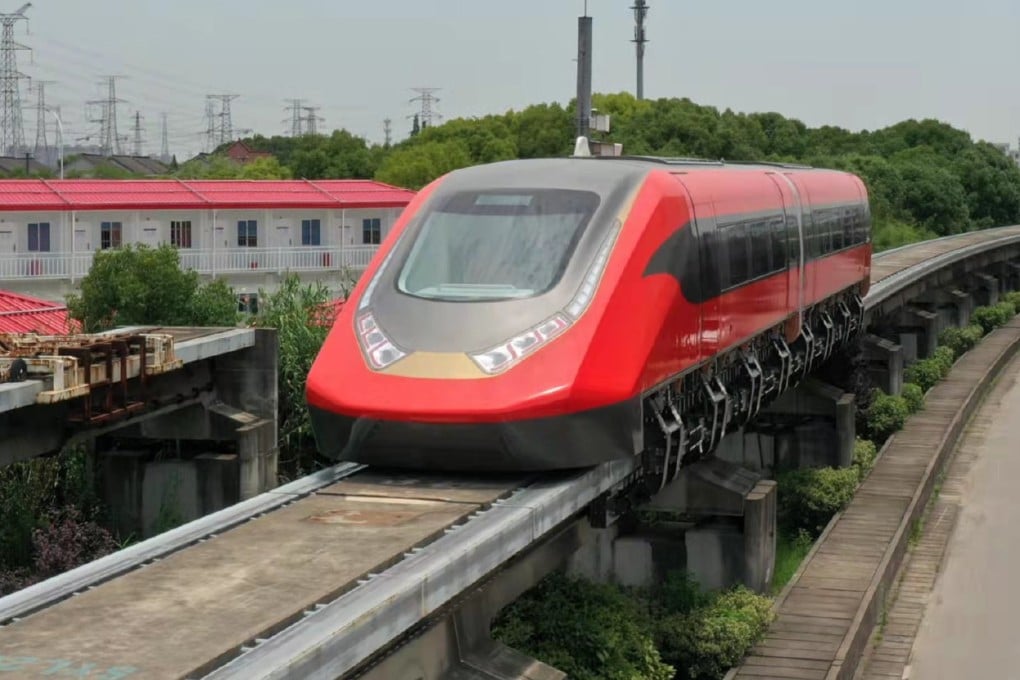In maglev innovation, Chinese researchers transfer power wirelessly to moving train
- A test run in eastern China found the elevated prototype could draw powerful electricity from transmitting coils on the rail with up to 92.4 per cent efficiency
- Although a maglev train is driven forward by magnetic force, much of the equipment on board requires electricity, and existing methods have their drawbacks

The energy efficiency of a typical smartphone wireless charger is around 50 per cent. When charging a moving electric car with roadside transmitters, even more of the energy – nearly 80 per cent – is wasted, according to recent experiments.
But a maglev train in Qingdao, in China’s eastern Shandong province, designed to travel at a top speed of 600km/h (372mph) while being elevated by magnetic force, could draw powerful electricity from transmitting coils on the rail with up to 92.4 per cent efficiency.
The experimental results suggested that the wireless power transmission technology, based on extensive research and experiments by scientists and engineers around the world over the past few decades, was now “feasible for rail transport”, said lead project scientist Wu Donghua, of the CRRC Qingdao Sifang company, this month in a paper published in the Journal of Southwest Jiaotong University, a Chinese language peer-reviewed publication.
Power supply has been a major technological challenge in high-speed maglev technology.
